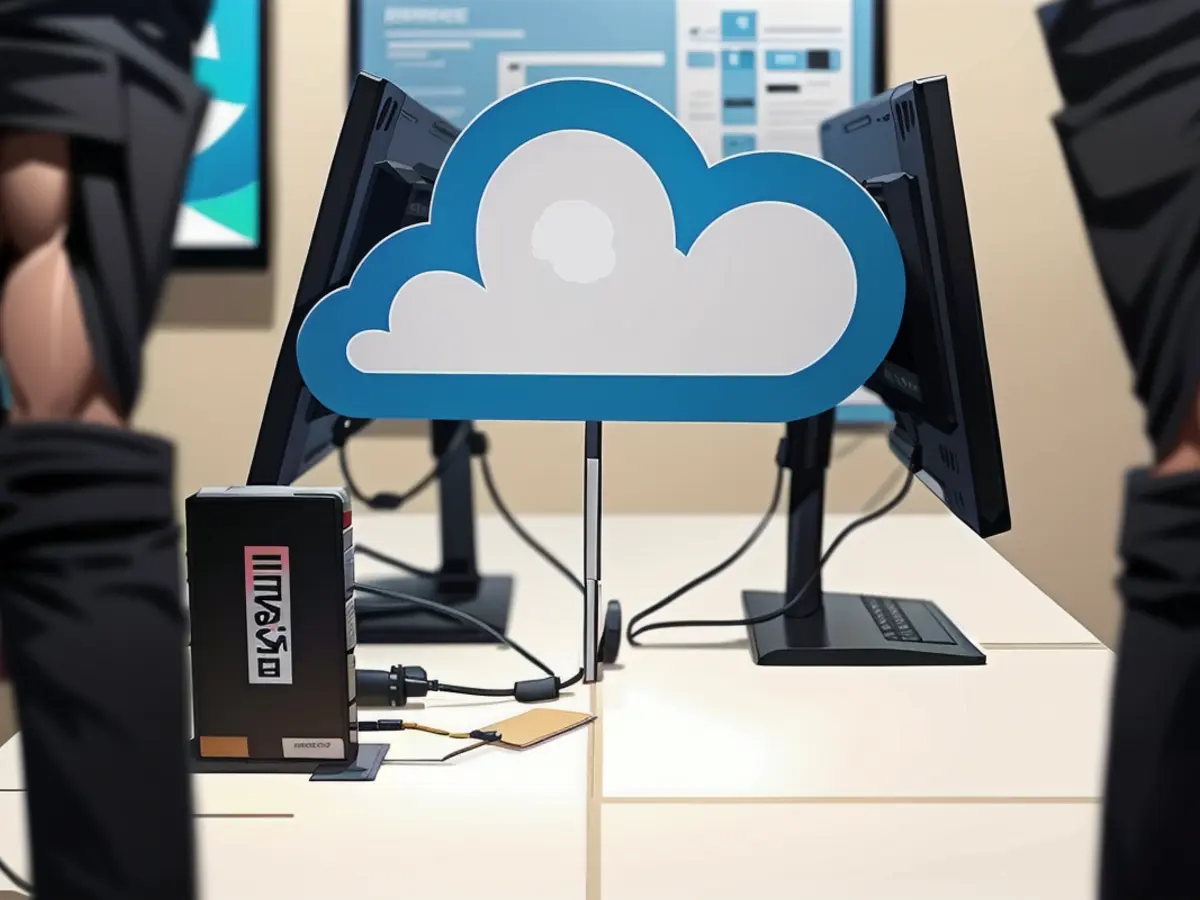Five ways to ensue safety in cloud-based data backups
Don't let your precious memories and files disappear into thin air - opt for cloud storage, but make sure you're taking the necessary precautions. The internet industry association (eco) has some advice for you to keep your data safe and secure in the cloud.
Want to safeguard your important pictures, papers, and other information? Consider creating backups. Cloud storage is a viable option, giving you access to your files whenever you want. But how can you ensure your files are really safe in the cloud? Here are eco's top five tips.
Selecting the right platform
The process of safely storing pictures in the cloud begins with choosing a reliable provider. Many offer free storage up to a certain amount of data or with lower quality, while others require a paid subscription.
Recognized names like Google Photos, Apple iCloud, Amazon Photos, and Microsoft OneDrive are recommended by eco. Keep in mind, though, that complying with the General Data Protection Regulation (GDPR) is important. If this is a priority for you, choose a provider based in the EU. Strato HiDrive, for instance, is a solid option. Some platforms also offer encrypted storage, which offers an additional layer of security.
Setting up automatic backups
To avoid losing irreplaceable memories, eco suggests using automatic synchronization and backup on your device. This way, your photos and videos are uploaded to the cloud without any effort on your part. Android and iPhone users are covered: the Google Photos and Apple iCloud apps offer this feature by default.
For Android users, open the Google Photos app, sign in with your Google account (if needed), and tap your profile picture in the upper right corner. Under Photo Settings, choose Backup and enable this option. You can also adjust the storage quality there. Photos are then saved with a maximum size of 16 MB, while videos are saved in HD quality.
If you have an Apple device, navigate to the Settings app through the gear icon, tap your Apple ID at the top, then iCloud, and finally Photos. Here, activate This iPhone syncs to automatically upload and protect your precious memories. Apple offers 5 GB of free storage, though, so a paid subscription is often necessary for additional space.
Organizing your photos
Keeping order among your photos not only helps you manage them better but also makes finding specific images easier. Some services even use facial recognition and geotagging to streamline the organization process.
With geotagging, the location data of your photos is added automatically, allowing you to sort them by where they were taken. This makes compiling albums of your favorite vacations easier and more logical.
Securing your data
To protect your account, use a strong password or enable two-factor authentication. This way, even if someone steals your login information, they can't access your photos without your permission.
To set up two-factor authentication (2FA), go to the settings of your cloud service and look for the option "Two-factor authentication" or "Security". Follow the instructions to enable it. This often entails entering your phone number and receiving a verification code via SMS or using an app.
Another useful tool is a password manager, which helps create and store strong passwords for your cloud services. This way, you don't need to remember them yourself and can use different passwords for each service.
It's crucial to secure your cloud account with extra measures, especially if it's a Google or Apple account. At least two-factor authentication (2FA) should be activated. This verifies a login through methods like receiving a code via SMS. Two-step verification, on the other hand, offers even more protection; logging in on a device using a fingerprint or facial scan, for example, is an option all major services now support. Additionally, review your data protection settings to ensure your chosen pictures are visible to others.
Regular backups
Despite all the cloud advantages, there's a risk technical issues may prevent access to your files. That's why it's vital not to rely solely on the cloud. Regularly create physical backups, like on an external hard drive or network storage (NAS).
Read also:
To further safeguard your data, consider implementing double backups. This means having a backup of your cloud backups, preferably on a physical device like an external hard drive or network storage (NAS). This way, if an issue arises with your cloud service, you won't lose your data altogether (Double backups provide an extra layer of security).
Following eco's tips for cloud services, it's also wise to explore the option of premium plans, which often include features such as higher storage capacity, priority tech support, and more advanced security features (Five tips for ensuring safety in cloud-based data backups can lead to more robust security with the right investment).








